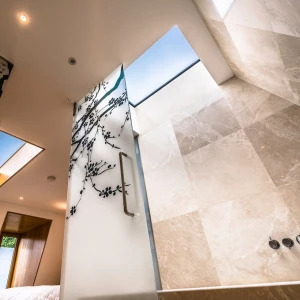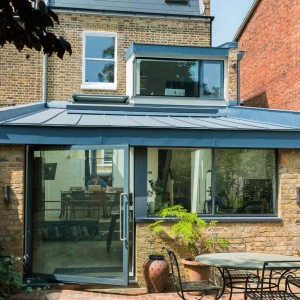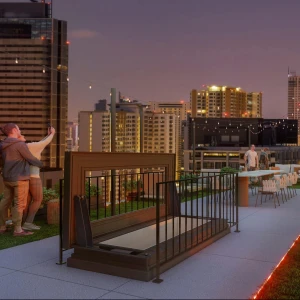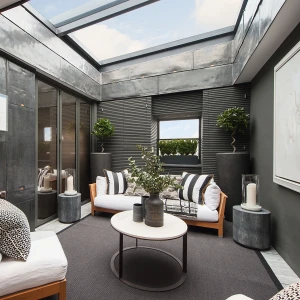- News and Insights
- Home
- Home
- News and Insights
- What glass should be specified for skylights?
What glass should be specified for skylights?
Rooflights are versatile construction products, available in pitched rooflight and flat rooflight variations to provide daylighting solutions in a whole host of roof constructions.
14.05.2025
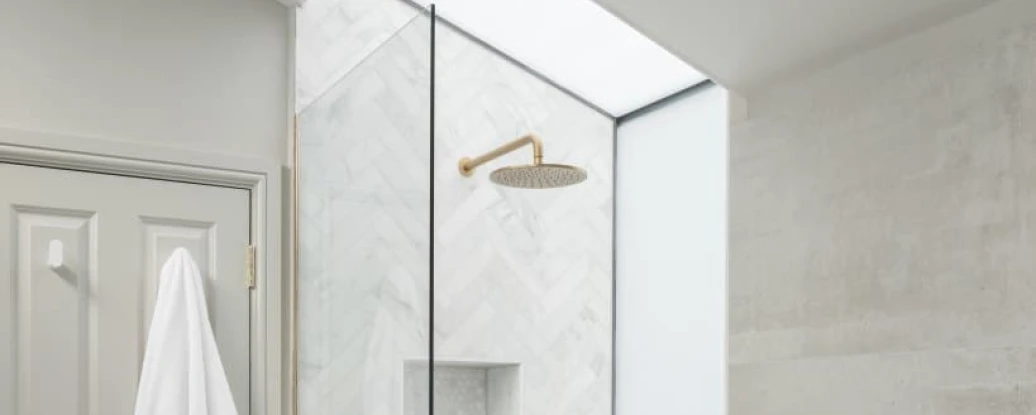
Understand key considerations for specifying the correct glass for residential skylights
To do some or all these things means specifying glass in the skylights accordingly. Maybe a pitched skylight requires solar control, or a flat skylight needs to be safe to walk on. To meet the different performance requirements demanded by modern construction projects requires more than just standard glass, and this blog post gives an overview of some of the available variations.
What heat-treated glass types are used in skylights?
Annealed glass is free of internal stresses caused by other heat treatments, but it breaks easily into large shards and is considered unsafe for certain uses in buildings. Annealed glass can be used as safety glass when it is incorporated into a laminated pane but the risk of thermal heat stress should be considered. This can be caused by partial shading from external objects or close-fitting blinds on the inside of the glazing. Thermal stress in glass can lead to thermal cracking of the glass.
Toughened glass is a product that breaks into smaller pieces or granules, and is therefore considered a safety glass. It is produced by rapidly cooling annealed glass to make the surface of the glass more resistant to tensile failure. This tempering makes toughened glass some five to six times stronger than annealed glass, and more resistant to blunt impact.
Heat-strengthened glass is tempered in a similar way but cooled more slowly. It is only around three times as strong as annealed glass (or half as strong as toughened glass). If it breaks, it exhibits similar behavior to annealed glass. It cannot be used as safety glass on its own but does lend itself to use in a laminated pane.
Bonding two panes of glass with an interlayer produces laminated glass, a catch-all term to cover the various combinations of glass and interlayer. Because the interlayer holds the glass even when broken, laminated glass is typically used where security is a priority, as well as in safety applications like overhead and walk-on glazing.
Another advantage of laminated glass is that it offers an acoustic performance benefit. Read more about the differences between toughened and laminated glass.
Considering the issue of safety further, most skylights are designed to be non-fragile, and to provide a level of non-fragility equivalent to the surrounding roof. They should not be taken as being safe to walk on, instead being designed typically to prevent people or objects falling through in the event of an accident on the roof – unless specifically designed to floor loadings.
For overhead glazing the first choice for the inner pane should always be a laminated glass to ensure it is considered non-fragile and to protect building occupants below from falling glass shards if a pane should ever fail.
What other specification options are available for skylight glazing?
As part of contributing to the thermal efficiency of the building fabric, the glass in skylights can be treated to provide solar control and reflectivity. It can also receive a low emissivity (low-e) coating to allow short-wave radiation from the sun into the building while restricting the loss of long-wave radiation back out of the building.
However, these options are not different types of glass, they are treatments and coatings applied to the chosen glass. A development that does fall into the category of a different ‘glass type’ is heated glass.
For applications where the moisture load/humidity is particularly high (such as swimming pools), heated glass raises the surface temperature of the skylight, reducing the potential volume of condensation occurring on it. Other uses for heated glass include evaporating rainwater or dew and melting ice and snow.
When wet, however, walkable skylights are slippery, and anti-slip finishes provide an antidote to the inherent risks.
Sandblasting the surface of skylight glass is one way to increase slip resistance, while also adding obscurity and creating light diffusion. More commonly, ceramic frit is used. Modern techniques screen-print the frit onto annealed glass before tempering it to achieve the desired performance.
Fired permanently into the surface of the glass, the frit provides the slip resistance. Textured glasses offering slip resistance are also available.
Ceramic frit and screen-printing techniques can be used for decorative effect as well, especially in conjunction with enameled glass. Ceramic paint is applied to the glass before toughening, and the toughening process fires the paint into the surface of the glass. Using enameled glass in conjunction with LED lights can create striking patterns of color and light in the glass.
These decorative uses of glass, and other situations where clarity is particularly desirable, lend themselves to the use of low-iron glass. The silica used in the initial glass production is selected for its low iron content removing the natural green-blue coloring that occurs otherwise.
Other visual effects can be achieved using switchable or electrochromic glass. Switchable glass turns from opaque to clear when a current is passed through it, while electrochromic glass darkens to provide solar control when a current is passed through it.
Are there low maintenance glazing options for skylights?
As part of the specification process for skylights, operational treatments can be requested that reduce the maintenance burden for homeowners.
Suited to glazing installed at a 30-degree pitch or greater, self-cleaning glass features a coating that organically breaks down dirt, leaving it ready to be washed away during the next rain shower. As self-cleaning glass is not compatible with silicone, an alternative is the proprietary glass treatment, Enduroshield, which acts like a ‘non-stick’ frying pan coating.
Whichever option is chosen, periodic cleaning by building users is still required and recommended.
About Glazing Vision
Architecturally ambitious and impressive skylight installations often must meet higher standards of performance and safety, whether to achieve a comfortable indoor environment, to offer the capability of being walked on, or to provide access to a rooftop terrace. At the same time, they must be capable of meeting the fundamental requirements of national building regulations.
For further advice and guidance on how Glazing Vision architectural skylights can help to future-proof your project, contact us here.

